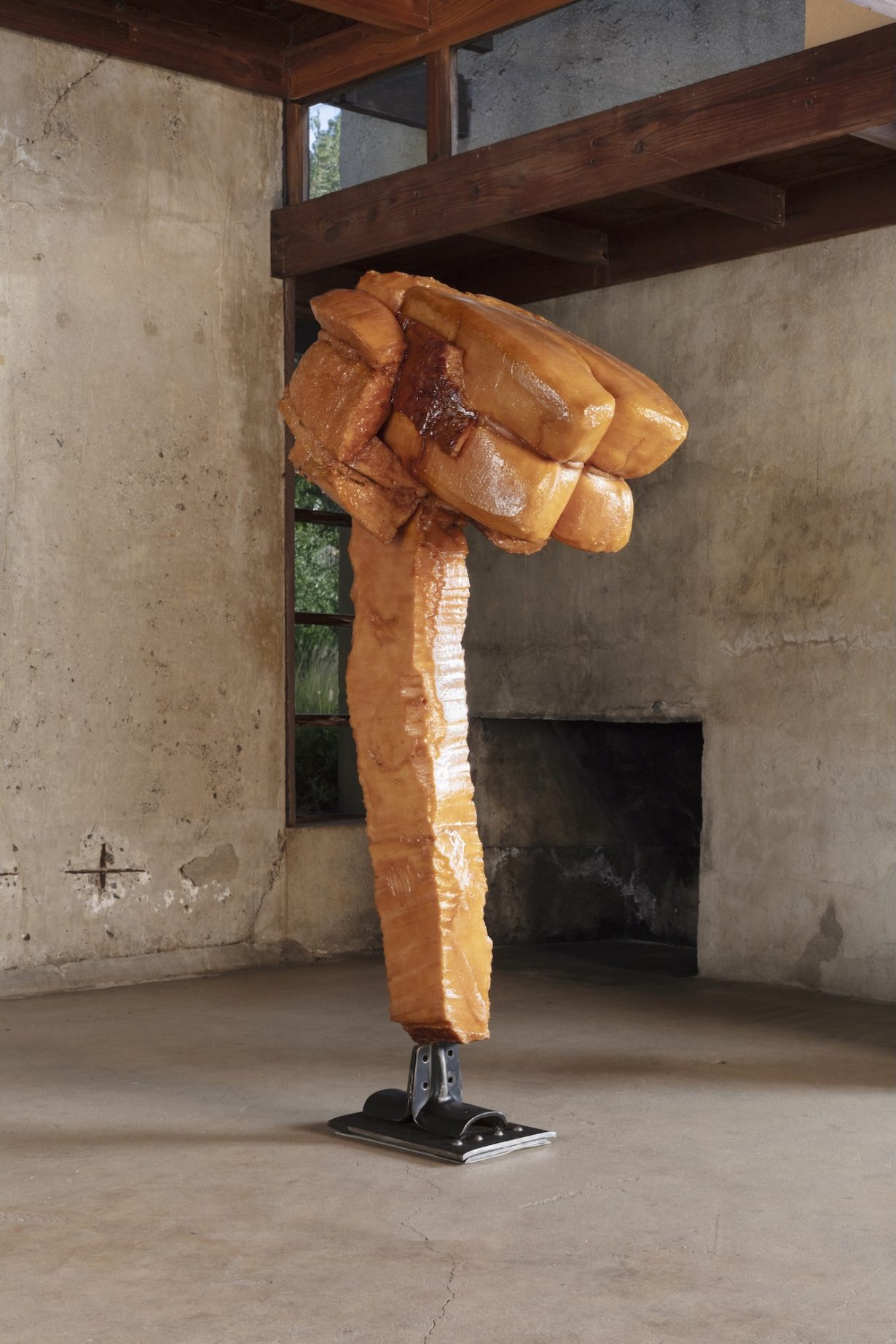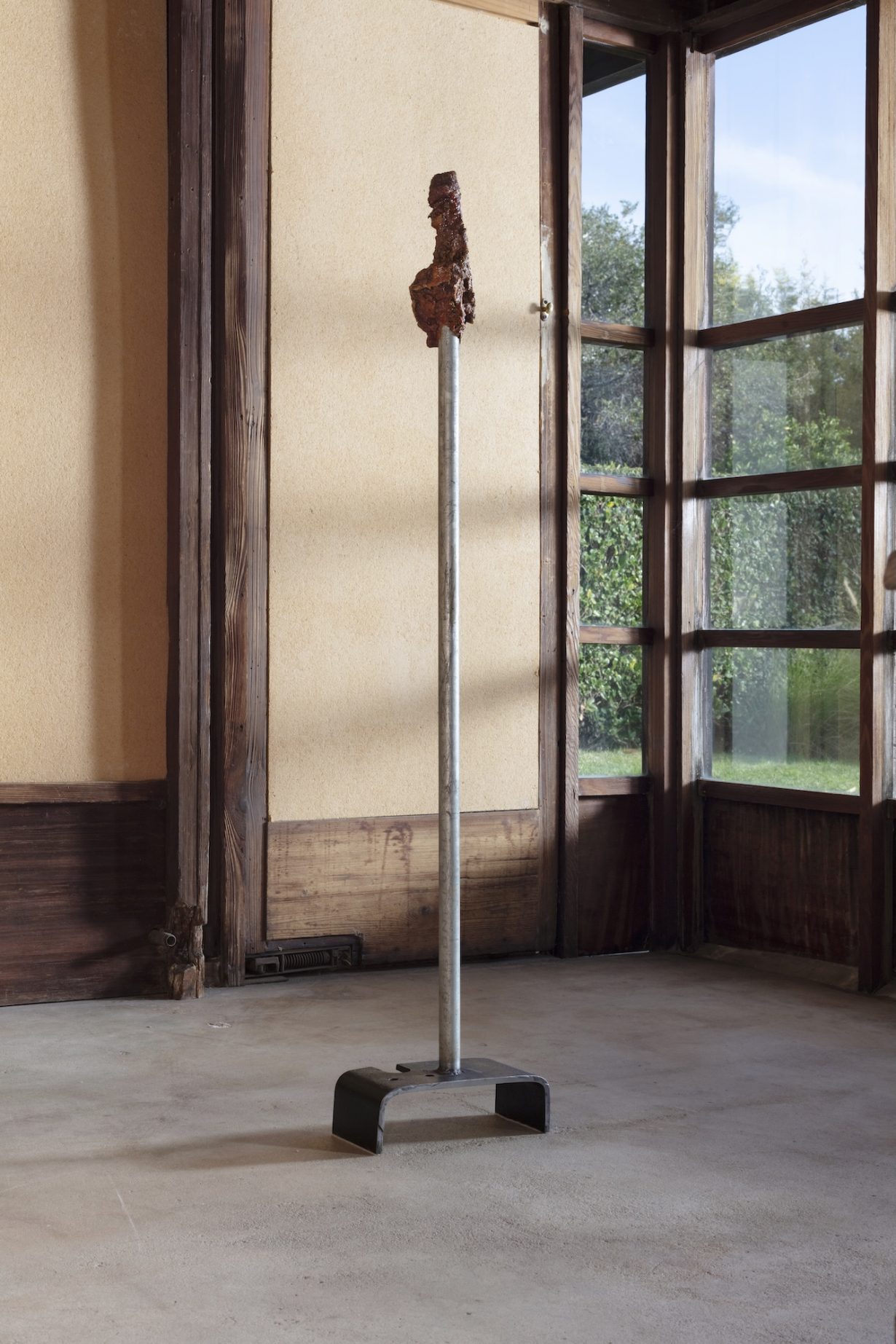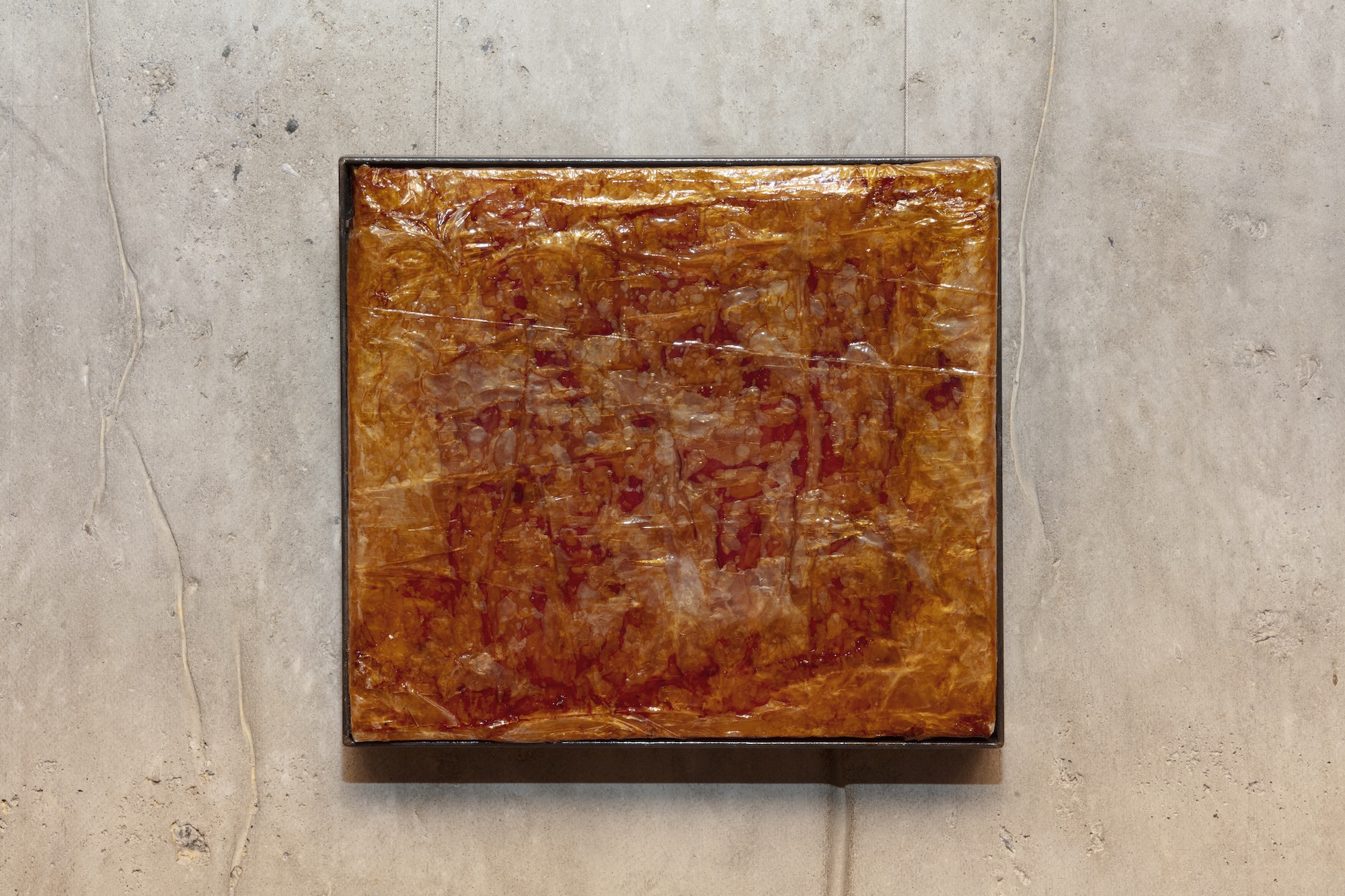Lang’s newest artwork, like his clothing, explores the uncanny ways that industrial refuse can interact with and even evoke human flesh
In 1998 Helmut Lang shifted the New York presentation of his Spring/Summer collection from November to September, hoping to pre-empt other major fashion houses’ runways. Instead, the entire fashion world followed suit, debuting their own Manhattan shows to correspond with Lang’s – a calendar shift that remains to this day. During the 1990s, where Lang went, everyone followed: designers like Calvin Klein and Raf Simons adopted his sensual, minimalist approach to workaday materials like denim, cotton and rubber, forming the postgrunge look that defined the era. Twenty years after quitting his label to explore other artforms, he has had solo exhibitions at Sperone Westwater and Von Ammon Co, among others. Lang’s newest artwork, like his clothing, explores the uncanny ways that industrial refuse can interact with and even evoke human flesh – in all its sexy, disgusting and haunting potential.
Lang’s work has always been provocative – The New Yorker, in 1994, devoted a full two pages to Lang’s ‘rubber dress’, a popsicle-red latex mini with fine lace overlay – but these 12 works, scattered across the low-slung, appropriately ascetic Schindler House in West Hollywood, discard any remaining frills. The sculptures and wall-based works use techniques originally found in Lang’s clothing – but with a darker, more grotesque edge. On entering, the visitor is greeted by two sculptures, fist IV and fist I (both 2015–17), which each feature a thin rectangular column that bursts at head height into a bulbous shape resembling a wet, clenched fist, per their titles, or a raw drumstick. These bodily forms, created from discarded mattress foam moulded around steel armatures and coated in slippery, clear wax, look uncomfortably constrained: creases and folds in each knotty grip give the appearance of fat or skin bulging over a too-tight belt.

Deceptive surfaces are a Lang hallmark, showcasing his ability to lend banal materials a narrative weight. consenting position (2015–17), a spare sculpture consisting of two stacked, rough foam blocks about the width of a mattress, appears unsettlingly slick with moisture. This effect, created using resin and shellac, is similar to one Lang pioneered in his 1990s ‘wet look’ synthetic garments, which made models seem like they had just jumped in a pool and sensuously emerged onto the runway. But the sexual innuendos of his clothing – Cathy Horyn wrote in Vanity Fair that the high armholes on his tops felt ‘as if you were wearing a terribly naughty leather-shop harness’ – become alienating and even violent in his contemporary sculpture. While their titles suggest the niche eroticism of BDSM subcultures, Lang’s sculptures are as sexy as a funeral. for you (2024), positioned in the middle of an empty room, features a phallic foam object skewered by a thin steel rod, its shiny surface covered in clotted shellac and resin the colour of dried blood.

Lang’s contemporary sculptures and wall-based artworks feel less like a tease and more like a warning – perhaps of what happens when man and machine begin to merge, either in kink or in life. Two wall-based works, kleine Portrait Arbeit I and kleine Portrait Arbeit II (both 2015–17), look like skin turned inside out and pulled mechanically taut across an underlying armature. Their brown viscous surfaces are creased and pockmarked with air bubbles, encased by cold steel frames and hung with thin wire from single nails. Industrial accents anchor each work: in prolapse II (2024), a rectangular steel support, tarnished to a dark, wrought-iron shade, undergirds a gelatinous mound reminiscent of a brain. These apparatuses counter the bodily, associative nature of Lang’s foam forms, tying them, almost literally, to more contemporary infrastructure like construction scaffolding or manufacturing plants.
Lang was ‘famous’, according to retailer SSENSE, for having said that he wanted his models to be ‘broken dolls’, a phrase that aestheticises women not only as objects, but as hurt ones. At the MAK Center, Lang reveals the visceral, abject results of such treatment. Ultimately, it accomplishes what the artist, in an interview with i-D in 1993, called a ‘social reflection’: Lang’s sculptures show how often bodies are treated like objects, and how objects can be treated like bodies, too. If not very pretty, the results are strangely compelling. Maybe it is because body modification, from tattoos to Botox to Ozempic, has never been more accessible or more widespread that Lang’s work strikes an uncomfortable chord.
What remains behind at Center for Art and Architecture, Los Angeles, through 4 May
From the May 2025 issue of ArtReview – get your copy.
